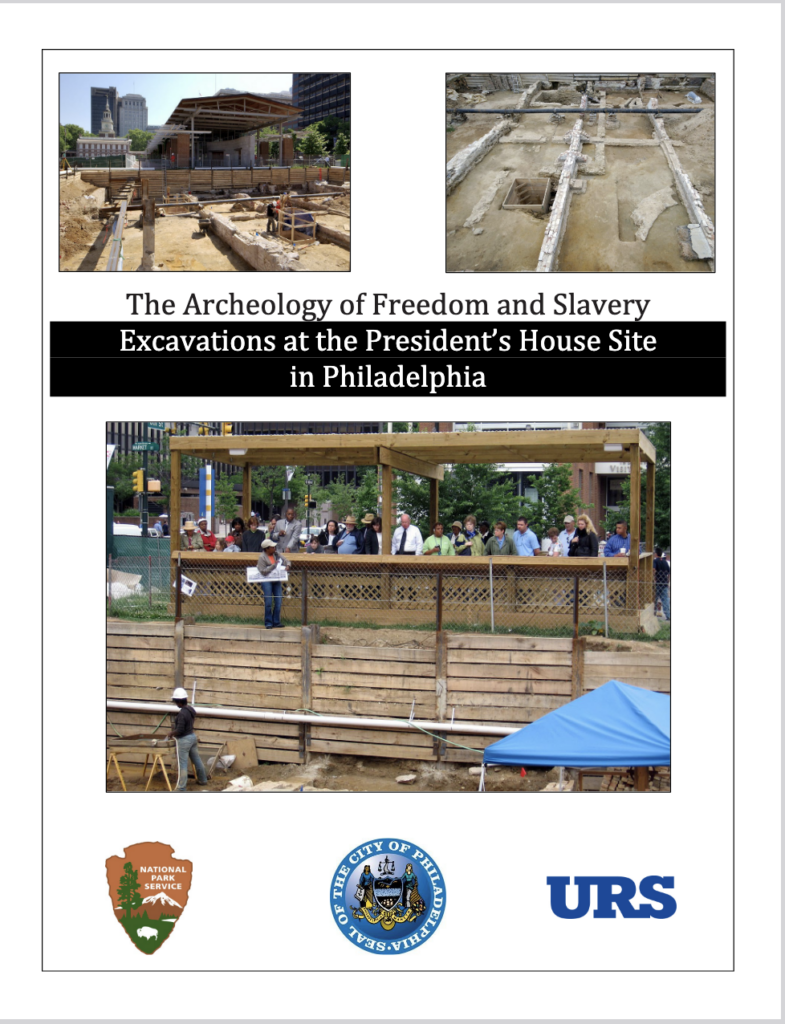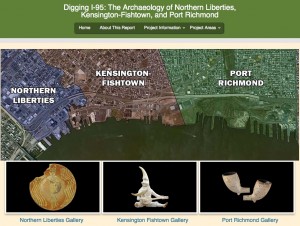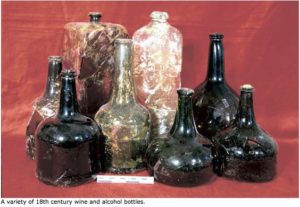Project Report Index
Back to PAF HOME
Back to PAF Research Overview
Forward to Articles, Papers, Books, Videos & Blogs
~~~
PAF aims to make archaeological findings from the Philadelphia area publicly available. Below you will find a list of reports for several projects completed over the past decades. Older reports are being updated to an electronic format for use on this page. Please check back periodically to see what’s new. LARGE PDF FILES MAY TAKE A FEW MINUTES TO LOAD.
ABOUT ARCHAEOLOGICAL REPORTS Archaeological site documentation is technical reporting. It is specifically designed to preserve in perpetuity material culture information recovered during an archaeological project. If the project was undertaken as legislated (required) cultural resource compliance then the reporting format is prescribed by the government agency responsible for the excavation. If the archaeology was done as part of ‘elective’ scientific inquiry, then the reporting format follows the recognized scholarly standards of practice for the field. In either case, the resulting reporting materials are heavily jargon-laden as they implement the specialized terminology of archaeological research. Non-archaeologists may find these reports to be difficult to read and hard to understand, and that they can come across as painfully dull. It helps to keep in mind that the purpose of the archaeological site report is to document what has been destroyed or may be destroyed in excavation — to, in actuality, ‘stand in’ for the site that no longer exists. The information in these reports serves as invaluable reference data for archaeologists working today and decades from now.
The Archeology of Freedom and Slavery: Excavations at the President’s House Site in Philadelphia
Prepared for National Park Service and City of Philadelphia, by URS Corporation (Douglas Mooney, Ingrid Wuebber, and Cheryl Janifer LaRoche), National Park Service (Jed Levin), and Independence National Historical Park (Patrice L. Jeppson, Joe Roberts, and Karen Lind Brauer). November 2009, Revised September 2023.
Read the project overview and find a link to President’s House Site report here…
A Distinct Church of the Lord Jesus”: The History, Archeology, and Physical Anthropology of the Tenth Street First African Baptist Church Cemetery, Philadelphia, Pennsylvania, Site Number 36 PH 72, Vine Expressway (1-676), L.R. 67045, ER# 82-0133-101
Prepared for Gaudet & O'Brien Associates/Urban Engineers, Incorporated 300 North 3rd Street, Philadelphia, Pennsylvania 19106-1193 and Department of Transportation, Commonwealth of Pennsylvania, Engineering District 6-0, 200 Radnor-Chester Road, St. Davids, Pennsylvania 19087. By Thomas A.J. Crist, Reginald H. Pitts, Arthur Washburn, John P. McCarthy, Daniel G. Roberts, with Contributions By Molly A. Hickey and Rashid M. Humphrey, John Milner Associates, Inc., 1216 Arch Street, 5th Floor, Philadelphia, Pennsylvania 19107. 1996
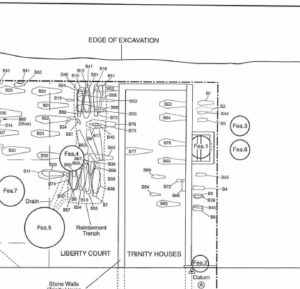
This is the final report prepared for an archeological data recovery project conducted in 1990 at the site of a former cemetery used by the First African Baptist Church between 1810 and 1822. The site was excavated as part of the Vine Street Expressway (I-676) Construction Project, undertaken by the Pennsylvania Department of Transportation and the Federal Highway Administration. The skeletal remains and funerary artifacts of 89 African-American individuals recovered from the site — individuals associated with the earliest free African-American Baptist congregation in Philadelphia — revealed important information on the demography, health quality, prevalence of disease and trauma, patterns of physical stress, and levels of nutritional adequacy for a group of people about which little historical documentation exists. Analysis of the burial practices at the cemetery revealed the incorporation of Christian mortuary traditions into the African American funerary rite, links between the funeral industries in England and Philadelphia during the early 19th century, and the marginal economic position of this segment of early Philadelphia society. “The historical development of the Church was found to reflect the attempts by early African Americans in Philadelphia to establish their own identity within an Anglicized society and to foster social institutions that supported African-American self-sufficiency and social cohesion. The cemetery project reported here is the successful result of a partnership between public agencies, private companies, archeologists and physical anthropologists, and members of the descendant community. [Due to its size, this report is not accessible directly online at this time. Please contact the PAF web Master at pljeppson@gmail.com to request a copy by email. READ THE ABSTRACT here…
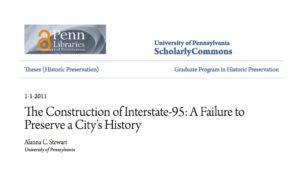
The construction of the ‘the Delaware Expressway’ (I-95) almost 60 years ago destroyed great swaths of the oldest portions of Philadelphia –and simultaneously created preservationists who fought to save America’s birthplace. This study, submitted by Alanna Stewart as fulfillment of a Masters Degree (Graduate Program in Historic Preservation at the University of Pennsylvania), explores the historic fabric lost, as well as the protests and heritage conservation movement that resulted from the highway development. Archaeologists will particularly appreciate Stewart’s overview of the The Pennsylvania Historical Salvage Council organized to deal with the archaeological aspects of the highway’s impact. The development of salvage archaeology related to federal highway activity, and the early players in Philadelphia archaeology — including John Cotter and Anthony Garvin — make this a valuable report for those with an interest in Philadelphia Archaeology.
Digging I-95
[Archaeological Research along the Delaware Waterfront in the Port Richmond, Northern Liberties, Kensington and Fishtown Neighborhoods]
This report uses the latest smart technology to allow visitors to search through and explore the archaeological research as they please via their computers or any web-enabled hand-held device. The report was created by archaeologists from the engineering, design, and construction firm of URS Corporation (Burlington NJ). Still in preparation, the report is being compiled for the Federal Highways Administration (FHWA) and the Pennsylvania Department of Transportation (PennDOT). The archaeological sites and artifacts discussed here were uncovered during archaeological excavations conducted in advance of construction to improve Interstate 95. PennDOT and FHWA are undertaking a long-term, multi-phase project to improve and rebuild I-95 in Pennsylvania. Part of this project involves the improvement of approximately three miles of the highway between I-676 and Allegheny Avenue in Philadelphia, and includes the reconstruction of the Girard Avenue Interchange, widening of the overhead highway, installation of new utilities and landscaping, and improving access to the Delaware Waterfront.Because archaeological investigations are still actively being conducted throughout the I-95 project area, this report represents a work in progress. As new discoveries are made, and new information is revealed over the next few years, this report will be updated and expanded.
Find the interactive, Digging-I-95 report here….
Washington Avenue
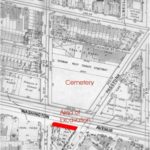
On October 22, 2001, along the 700 block of Washington Avenue in south Philadelphia, construction workers exposed human remains and several wooden coffins during a routine project to install a new city water line as part of a street repaving project. Two reports resulting from this project are posted here. One report, PARTNERING IN A SOUTH PHILADELPHIA DIG: THE WASHINGTON AVENUE BIOARCHAEOLOGY PROJECT, is drawn from a formal poster by A. Washburn, T.A. Christ, M.B. Goldberg, and M. Kirkpatrick that was presented at the 2007 Meeting of the American Association of Physical Anthropologists.
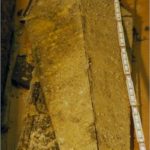
The Second report, Summary of Archaeological Salvage of Burials, Washington Avenue, Philadelphia, is referenced here as The Washington Avenue Project, which is how the project is known within the archaeology community. This report was completed by Dr. R. Michael Stewart of Temple University. The report appendixes include a skeletal analysis by Dr. T. Thomas Crist, and a dental analysis by Dr. Art Washburn.
AME Mother Bethel Burial Ground/ Weccacoe Park
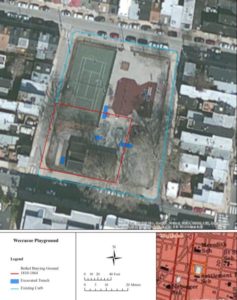
Archaeological Report: Phase IB Archaeological Investigations of the Mother Bethel Burying Ground, 1810 – Circa 1864 (80 pages, large pdf file) ER No. 2013-1516-101-A, Prepared for the Pennsylvania Horticultural Society by Douglas Mooney and Kimberly Morrell of URS Corporation, October 11, 2013. Archaeological Report Appendixes (84 pages, large pdf file)
See also here….
Queen Lane Redevelopment Project
[1755 Germantown Potter’s Field or Stranger’s Burial Ground]
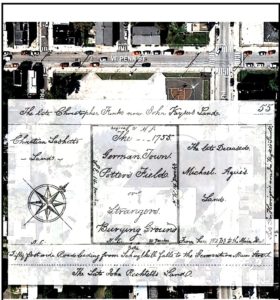
Queen Lane Redevelopment Project Report: Phase 1 Archaeological Survey (ER 2011-0018-101), Philadelphia Housing Authority Queen Lane Apartments Project City of Philadelphia, Pennsylvania, Appendix B, Figure 3. Prepared by Rachael E. Fowler, RPA, Philip Ruth, and Kenneth J. Basalik, Ph.D. Cultural Heritage Research Services, Inc. Lansdale, Pennsylvania, for Shoemaker/Synterra, a JV, West Conshohocken, Pennsylvania 19428. May 2013.
The Search for the 1945 Escape Tunnel at Eastern State Penitentiary Historic Site
Prepared by John Milner Assoc. Inc., for Eastern State Penitentiary Historic Site.
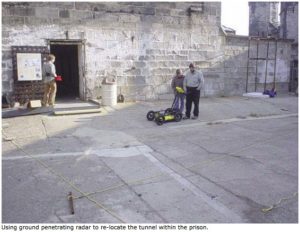
(Area F Report: Second to Front Streets between Gatzmer and Ionic Streets). Prepared for Independence National Historical Park by Juliette Gerhardt (with Contributions by Daniel G. Crozier, Betty Cosans-Zebooker, Roberta Zullick Taylor, Claudia Milne, Leslie E. Raymer, Karl J. Reinhard, Lori Aument and Alexander B. Bartlett) of John Milner Associates, Inc., 2006.
Federal Detention Center Project,
7th and Arch Streets
Outreach Booklet
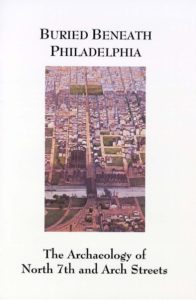
Fishtown Architectural and Archeological Industrial Survey
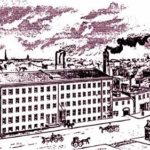
Prepared by John Milner Assoc., Inc.
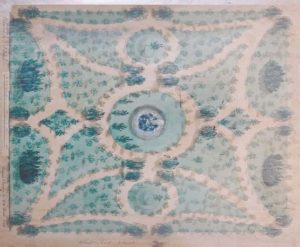
An Examination of Philadelphia’s Early Waterfront Through The Archeology of the Hertz Lot
By Carmen A. Weber, Edited and Compiled by Rebecca Yamin, John Milner Associates, Inc., 2006
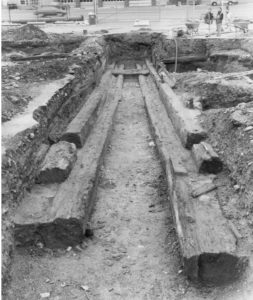

Hudson’s Square – A Place Through Time, Archeological Data Recovery on Block 2 of Independence Mall
Prepared by John Milner Associates, Inc. Submitted to Day & Zimmerman Infrastructure, Inc. Edited by Rebecca Yamin with contributions by Alexander B. Bartlett, Tod L. Benedict, Juliette Gerhardt, Cluadia Milne, Reginald H. Pitts, Leslie E. Raymer, Karl J. Reinhard. 2002, Revised 2007
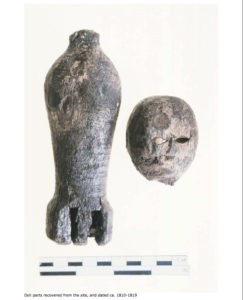
Finding Aide: Independence National Historical Park Archaeology Project Records, 1950-2011
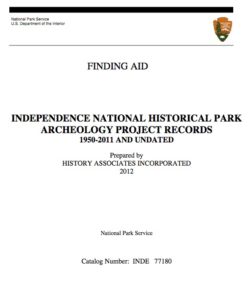
*****************************************************************************************
See also:
Philadelphia-area Archaeology Books…
Philadelphia-area Archaeology Articles/Papers…
by admin
